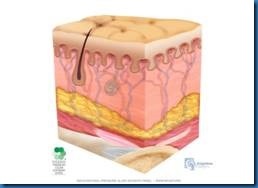傷口大師 游朝慶 醫師
在2016年4月8-9日的一場超過400位專家出席的共識會上(NPUAP 2016 Staging Consensus Conference,如圖1) (注:NPUAP,美國國家壓瘡諮詢委員會,National Pressure Ulcer Advisory Panel ),大家對於壓瘡的分期及定義這議題交互討論,以及對於爭議部分予以表決,在這會議中,與會者都使用照片來確認每一個新的術語( terminology)。最後NPUAP在4月13日向世界公布這新的壓傷(pressure injury)語言以及其修正後的分期。同時作為美國健保給付依據的OASIS (Outcome and Assessment Information Set,居家照護評估表)也將同步做修正。
圖1. NPUAP 2016 Staging Consensus Conference
壓傷的分期是用來表示組織受傷的程度。之前臨床工作者嘗試去診斷及確認壓傷的期別所會遇到的問題都在這次被NPUAP修正。
"Pressure injuries are staged to indicate the extent of tissue damage. The stages were revised based on questions received by NPUAP from clinicians attempting to diagnose and identify the stage of pressure injuries.
NPUAP Staging Task Force News Release 2016.4.13
NPUAP並且免費提供13個圖示(圖2-1 - 2-13)來表示各期別(http://www.npuap.org/resources/educational-and-clinical-resources/pressure-injury-staging-illustrations/).
第1期壓傷: 完整的皮膚上有紅斑,給予指壓時不會消失
Stage 1 Pressure Injury: Non-blanchable erythema of intact skin
在完整的皮膚上看到局部有指壓時不會消失的紅斑(如圖2-4, 圖2-6),但這在皮膚較黑的患者上可能會看不到變化(如圖2-5、圖3),雖然如此,可消失的紅斑、感覺異常、體溫異常及皮膚變得較硬都可能會緊接著出現不會消失的紅斑。然而皮膚顏色的變化並不包括紫色或栗色(maroon)(補充:也就是如瘀青般的顏色),其代表著深層組織傷害(deep tissue injury)。
Intact skin with a localized area of non-blanchable erythema, which may appear differently in darkly pigmented skin. Presence of blanchable erythema or changes in sensation, temperature, or firmness may precede visual changes. Color changes do not include purple or maroon discoloration; these may indicate deep tissue pressure injury.
圖2-1. Healthy skin – Caucasian(健康的皮膚–白種人,高加索人)
圖2-2.Healthy skin – Non-Caucasian(健康的皮膚–有色人種)
圖2-3.Stage 1 Pressure Injury – Caucasian(第1期壓傷–白種人,高加索人)
圖2-4.Stage 1 Pressure Injury – Edema(第1期壓傷–水腫),補充:這圖和上一張圖(圖2-3),我看不出差異性,水腫不是壓傷的症狀,但若患者因營養不良導致水腫、或者因失禁導致皮膚潮濕,則比較容易造成第1至第2期壓傷。
圖2-5.Stage 1 Pressure Injury - Non-Caucasian(第1期壓傷––有色人種)
圖2-6.Blanchable vs Non-Blanchable,給予指壓時會消失的紅斑vs不會消失的紅斑
圖3.如右圖,皮膚較黑的人可能無法判斷有無blanchable,圖片取自David Rokes, Debra Kurtz, WoundRounds: Clinical Reimbursement and Wound Care webinar slides, Health & Medicine, Economy & Finance, Business, Nov 11, 2011 http://image.slidesharecdn.com/woundroundsclinicalreimbursementandwoundcarewebinarslides-111111125701-phpapp02/95/woundrounds-clinical-reimbursement-and-wound-care-webinar-slides-36-728.jpg?cb=1321016386
第2期壓傷:部分皮層皮膚缺損,並真皮層露出
Stage 2 Pressure Injury: Partial-thickness skin loss with exposed dermis
部分皮層皮膚缺損,並真皮層露出。可以看到傷口床,其是粉紅或紅色,濕潤,並且或許會有完整或泡掉的水泡,裡面充滿著漿液(serum),但是並不會看到脂肪或更深層的組織。肉芽組織、腐肉slough及痂皮eschar在這階段也不會出現。骨盆的傷害通常導因於不良微氣候及剪力、及腳跟的皮膚傷害通常導因於剪力。這一時期的傷害不要被用來描述潮濕相關皮膚損害(moisture associated skin damage (MASD))如尿布疹(incontinence associated dermatitis (IAD))、對磨疹(intertriginous dermatitis (ITD)、補充:或稱燒當(台語))、醫療貼布相關皮膚傷害(medical adhesive related skin injury (MARSI)、補充:如撕外科膠帶導致的破皮)或創傷(traumatic wounds,如皮膚撕除傷、燙傷或擦傷 (skin tears, burns, abrasions))
Partial-thickness loss of skin with exposed dermis. The wound bed is viable, pink or red, moist, and may also present as an intact or ruptured serum-filled blister. Adipose (fat) is not visible and deeper tissues are not visible. Granulation tissue, slough and eschar are not present. These injuries commonly result from adverse microclimate and shear in the skin over the pelvis and shear in the heel. This stage should not be used to describe moisture associated skin damage (MASD) including incontinence associated dermatitis (IAD), intertriginous dermatitis (ITD), medical adhesive related skin injury (MARSI), or traumatic wounds (skin tears, burns, abrasions).
- 補充1:其中「這時期不會出現肉芽組織、腐肉及痂皮」這句話很重要,因臨床工作者通常把表淺並含有腐肉或痂皮的三期壓傷誤當成第二期,只是因為這傷口不深,其實只要看到腐肉或痂皮,就至少是第3期壓傷或者是無法分期的壓傷。
- 補充2:至於和位於股溝的尿布疹、位於鼠蹊的對磨疹及其他破皮的區分在於:其不再骨頭突出處。
- 補充3: 微氣候(microclimate)所指涉的是一個微小範圍內所形成的氣候現象。在這兒指的是骨盆處,也就是薦骨處,常因為失禁及包尿布,導致局部潮濕的環境,造成皮膚浸潤,進而容易產生第1或2期壓傷。
- 補充4:和上一版比起,這兒強調了剪力Shear,認為剪力是造成第2期及無法分期壓傷的重要因素,其雖然沒提到對第3、4期壓傷的影響,但是日本人認為,剪力是造成潛行性傷口(undermining,口袋型傷口)的重要因素。
圖2-7.Stage 2 Pressure Injury第2期壓傷
第3期壓傷: 全層皮膚缺損
Stage 3 Pressure Injury: Full-thickness skin loss
全層皮膚缺損並可看到脂肪組織,且通常可看到肉芽組織及捲邊(epiboly,傷口邊緣回捲rolled wound edges,如圖2-9),也或許可以看到腐肉slough或痂皮eschar(如圖2-8),其傷口深度在不同部位會不一樣,如較肥胖的部位傷口也會較深。此外也可能會出現潛行性傷口及隧道(Undermining and tunneling)。但是不會看見筋膜、韌帶、肌肉、軟骨、及骨頭。但此時若是腐肉或痂皮覆蓋住整個傷口,這時便要改稱為無法分期的壓傷Unstageable Pressure Injury。
Full-thickness loss of skin, in which adipose (fat) is visible in the ulcer and granulation tissue and epibole (rolled wound edges) are often present. Slough and/or eschar may be visible. The depth of tissue damage varies by anatomical location; areas of significant adiposity can develop deep wounds. Undermining and tunneling may occur. Fascia, muscle, tendon, ligament, cartilage and/or bone are not exposed. If slough or eschar obscures the extent of tissue loss this is an Unstageable Pressure Injury.
- 補充:這兒多了一個新的名詞epiboly (外包、捲邊,其又可稱為epibole),其原本是胚胎學上的用法;原意是主要是指胚胎發育早期,內胚層被外胚層的被動包圍。廣義指外層細胞跑在其他細胞外面(並將之包覆),也用於自行癒合的開放傷口 (secondary intention wound healing)。指的是傷口周圍的表皮細胞想要快速縮小傷口,便拼命生長,但上層的表皮細胞長得比下層快,下層跑得比下面的基底膜快,於是當表皮細胞跑到了傷口邊緣時,傷口床的肉芽組織卻還來不及長上來,此時表皮細胞便被迫懸空往傷口中央長,並且由於外層的細胞長得較快,邊緣便往內捲縮,形成捲邊(如下圖4),我將之命名為捲邊,因為英文又叫做rolled edges。而然後呢,一旦捲邊的表皮細胞發覺自己懸空了,便會(嚇到)停止生長,接著命令傷口停止分泌所有生長的相關因子,最後整個傷口生長便停滯了,這就是慢性傷口故事的由來。所以呢?要如何治療它呢?護理人員可以使用硝酸銀(silver nitrate,AgNO3,其也常用來治療浮肉Overgranulation)來腐蝕破壞它(銀敷料無效)、液態氮應該也是可以,或請外科醫師用電燒或施行清創手術切掉它。
圖4.表皮細胞跑超過傷口邊緣,但還是free edge,便形成了捲邊epiboly。來源:自己畫的。
圖2-8. Stage 3 Pressure Injury第3期壓傷
圖2-9.Stage 3 Pressure Injury with Epibole第3期壓傷並捲邊
第4期壓傷:全層皮膚並組織缺損
Stage 4 Pressure Injury: Full-thickness skin and tissue loss
全層皮膚缺損並傷口直接露出筋膜、韌帶、肌肉、軟骨、或骨頭,也或許可以看到腐肉slough或痂皮eschar,同樣也可能會出會捲邊(epiboly,rolled edges)、潛行性傷口及隧道。其傷口深度在不同部位會不一樣。但此時若是腐肉或痂皮覆蓋住整個傷口,這時便要改稱為無法分期的壓傷Unstageable Pressure Injury。
Full-thickness skin and tissue loss with exposed or directly palpable fascia, muscle, tendon, ligament, cartilage or bone in the ulcer. Slough and/or eschar may be visible. Epibole (rolled edges), undermining and/or tunneling often occur. Depth varies by anatomical location. If slough or eschar obscures the extent of tissue loss this is an Unstageable Pressure Injury.
圖2-10. Stage 4 Pressure Injury第4期壓傷
無法分期的壓傷:全層皮膚並組織缺損被覆蓋
Unstageable Pressure Injury: Obscured full-thickness skin and tissue loss
雖然全層皮膚並組織缺損,但因為整個被腐肉或痂皮覆蓋導致其受傷的程度無法被確認,假如腐肉或痂皮能被移除,便可確認為第3期或第4期壓傷。在缺血的肢體或腳後跟上的穩定痂皮(如乾的、黏很緊的、完整的、沒有發紅或摸起來沒有水樣感覺的),應禁止被移除。
Full-thickness skin and tissue loss in which the extent of tissue damage within the ulcer cannot be confirmed because it is obscured by slough or eschar. If slough or eschar is removed, a Stage 3 or Stage 4 pressure injury will be revealed. Stable eschar (i.e. dry, adherent, intact without erythema or fluctuance) on an ischemic limb or the heel(s) should not be removed.
- 補充: 『在缺血的肢體或腳後跟上的穩定痂皮(如乾的、黏很緊的、完整的、沒有發紅或摸起來沒有水樣感覺的),應禁止被移除。』這句話很重要,其實在上一版就有提到禁止移除腳後跟的穩定痂皮,這兒多了「在缺血的肢體」,如PAOD患者的腳上任何痂皮,洗腎患者洗腎的那隻手出現血管通路竊血症候群(Vascular Access Steal Syndrome, VASS)使得遠端產生疼痛、組織壞疽等現象,不一定專指壓傷,畢竟在腳上任何部位的壞疽,要說是壓傷導致或是血循不好導致都很難講,但是,若摸不到腳上的脈搏,或者傷口位於腳後跟,此時,除非有感染發炎的現象,否則,請絕對不要清創,甚至禁止使用任何保濕藥膏。只要保持傷口的乾燥就好。
圖2-11.Unstageable Pressure Injury – Dark Eschar無法分期的壓傷–深痂皮
 圖2-12.Unstageable Pressure Injury – Slough & Eschar無法分期的壓傷–腐肉及痂皮
圖2-12.Unstageable Pressure Injury – Slough & Eschar無法分期的壓傷–腐肉及痂皮
深層組織壓傷:持久並給予指壓時不會消失的深紅、栗色或紫色斑塊
Deep Tissue Pressure Injury: Persistent non-blanchable deep red, maroon or purple discoloration
深層組織壓傷:持久並且給予指壓時不會消失的深紅、栗色(maroon,如圖5)或紫色斑塊,或真皮和表皮分離而表現出暗色的傷口床,或充滿血的水泡(如圖2-13)。在這種顏色改變之前,就會出現痛及皮膚溫度的改變。這種顏色的變化在皮膚較黑的人們身上表現可能會不一樣。導致壓傷的原因為強烈的或持續的受壓、或伴隨著剪力,作用在深層的骨頭與肌肉的交界處(補充:有人認為這內傷是因ischemia-reperfusion injury,從鄰近骨頭的深部肌肉開始壞死,由裡向外侵犯,為受壓過久,但又還不夠久,比如說建議2小時翻身,若受壓超過8小時組織便會壞死,但是給予壓迫4-6小時,在還未壞死前翻身,就會造成這種情況)。這傷害可以快速惡化為實質的組織傷害、也或許可能在不破壞組織的狀況下回復正常。假如可以看見壞死組織、皮下組織、肉芽組織、筋膜、肌肉或其他底層結構組織,表示已惡化成為全層的壓傷full thickness pressure injury (如無法分期的、第3期、或第4期壓傷)。但不要使用DTPI這名詞來表示血管、創傷、神經病變或其他皮膚病學的病變(補充:如cyanosis紫紺、撞傷導致的瘀青、類澱粉沉積症(amyloidosis)、老人皮膚太薄易形成的皮下瘀血)。
Intact or non-intact skin with localized area of persistent non-blanchable deep red, maroon, purple discoloration or epidermal separation revealing a dark wound bed or blood filled blister. Pain and temperature change often precede skin color changes. Discoloration may appear differently in darkly pigmented skin. This injury results from intense and/or prolonged pressure and shear forces at the bone-muscle interface. The wound may evolve rapidly to reveal the actual extent of tissue injury, or may resolve without tissue loss. If necrotic tissue, subcutaneous tissue, granulation tissue, fascia, muscle or other underlying structures are visible, this indicates a full thickness pressure injury (Unstageable, Stage 3 or Stage 4). Do not use DTPI to describe vascular, traumatic, neuropathic, or dermatologic conditions.
圖5.maroon,栗子色,字源來自法文的 marron,意即「栗子」,栗子熟了的顏色、介於紅跟紫色之間,又稱(葡萄)酒紅色,有點像棕色
- 補充:新版本已取消「疑」,並多個『壓』,不再叫疑深層組織傷害,而是直接稱呼為深層組織壓傷,然而歐洲的EPUAP仍然稱Suspected Deep Tissue Injury: Depth Unknown,不過EPUAP在2009年與NPUAP共同發表的International NPUAP-EPUAP Pressure Ulcer Definition及International Pressure Ulcer Classification System,還只承認壓瘡的四個舊分期,DTI及無法分期仍被歸類為graded IV,一直到2014年EPUAP、NPUAP與泛太平洋壓傷學會(Pan Pacific Pressure Injury Alliance (PPPIA) )共同發表最新的全球壓瘡指引(NPUAP-EPUAP-PPPIA Pressure Ulcer Treatment & Prevention, 2014 Quick Reference Guide.,此壓瘡治療與預防指引甚至還有簡體中文版本http://www.epuap.org/guidelines-2014/CHINA_EPUAP%20NPUAP%20PPPIA%20QRG_FINAL-Jan2016.pdf ),同時也在那年發布更新版本的international NPUAP/EPUAP pressure ulcer classification system,此時EPUAP其已全部承認2007年NPUAP壓瘡分期的6個分期。但是增加了一個類(Category)來代表分期(但級grade不見了),使用羅馬數字(I、II、III、IV)來代表期別,如第1期壓瘡稱為Category/Stage I: Nonblanchable Erythema。但是今年的NPUAP確定還是只使用stage分期,使用阿拉伯數字來命名第1-4期,而不再使用羅馬數字。
圖2-13.Deep Tissue Pressure Injury深層組織傷害
參考資料:
1. 全文翻譯自NPUAP官網http://www.npuap.org/resources/educational-and-clinical-resources/npuap-pressure-injury-stages/
2. 所有13個圖示(圖2-1 - 2-13),由NPUAP提供,並可免費供非商業用途使用
3. 壓瘡定性評估方法。NPUAP & AHCPR & International NPUAP-EPUAP http://woundmaster.blogspot.tw/2010/03/npuap-ahcpr-international-npuap-epuap.html
4. 壓瘡定性評估方法。NPUAP 2007年版壓瘡分期 http://woundmaster.blogspot.tw/2010/03/npuap-2007.html









![clip_image002[6] clip_image002[6]](https://pic.pimg.tw/woundmaster/1473694733-1616719474.jpg)








 留言列表
留言列表
